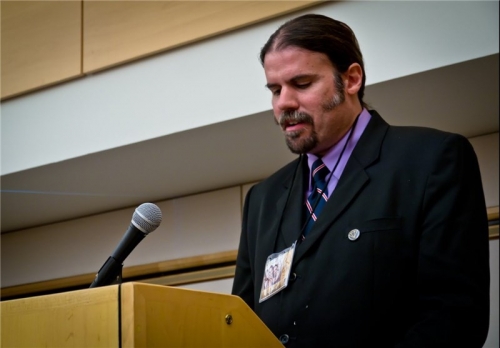
The Alt Right Among Other Rights
This is the text of a lecture I gave to the H.L. Mencken Club on November 4, 2017.
By Keith Preston
Ex: https://www.attackthesystem.com
Speaking about the intricacies of different ideological tendencies can often be a bit tedious, and certainly a topic like the Alt-Right can get very complicated because there are so many currents that feed into the Alt-Right. I know that when I spoke here last year I was speaking on the right-wing anarchist tradition, which is a highly esoteric tradition, and one that is often very obscure with many undercurrents. The Alt-Right is similar in the sense of having many sub-tendencies that are fairly obscure in their own way, although some of these have become more familiar now that the Alt-Right has grown in fame, or infamy, in the eyes of its opponents. Some of the speakers we have heard at this conference so far have helped to clarify some of the potential definitions of what the Alt-Right actually is, but given the subject of my presentation I thought I might break it down a bit further, and clarify a few major distinctions.
What is the Alt-Right?
The Alt-Right can be broadly defined as a highly varied and loose collection of ideologies, movements, and tendencies that in some way dissent from the so-called “mainstream” conservative movement, or are in actual opposition to mainstream conservatism. Of course, this leaves us with the task of actually defining mainstream conservatism as well. I would define the conservative movement’s principal characteristics as being led by the neoconservatives, oriented towards the Republican Party, and as a movement for whom media outlets like Fox News, talk radio, and publications like National Review and the Weekly Standard are its leading voices. Outside of the framework of what some here appropriately call “Conservatism, Inc.,” we could say that there is an Alt-Right that can be broadly defined, and an Alt-Right that can be more narrowly defined.
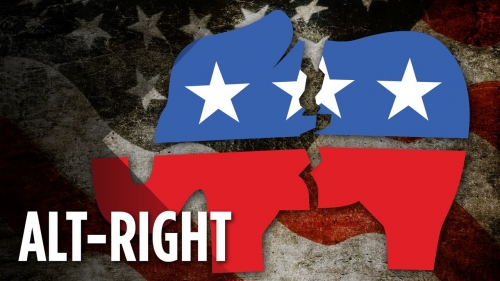
The Alt-Right broadly defined would be anything on the Right that is in opposition to the neocon-led Republican alliance. This could include everything from many Donald Trump voters in the mainstream, to various tendencies that have been given such labels as the “alt-lite,” the new right, the radical right, the populist right, the dark enlightenment, the identitarians, the neo-reactionaries, the manosphere (or “men’s right advocates”), civic nationalists, economic nationalists, Southern nationalists, white nationalists, paleoconservatives, right-wing anarchists, right-leaning libertarians (or “paleolibertarians”), right-wing socialists, neo-monarchists, tendencies among Catholic or Eastern Orthodox traditionalists, neo-pagans, Satanists, adherents of the European New Right, Duginists, Eurasianists, National-Bolsheviks, conspiracy theorists, and, of course, actually self-identified Fascists and National Socialists. I have encountered all of these perspectives and others in Alt-Right circles.
Under this broad definition of the Alt-Right, anyone from Steve Bannon or Milo Yiannopolis all the way over to The Daily Sturmer or the Traditionalist Workers Party could be considered Alt-Right. In fact, ideological tendencies as diverse as these have actually embraced the Alt-Right label to describe themselves. For example, Steve Bannon said at one point during the Trump campaign in 2016 that he wanted to make Breitbart into the voice of the Alt-Right, but then I have also encountered people who are actual neo-Nazis using the Alt-Right label to describe themselves as well.
A narrower definition of the Alt-Right might be to characterize what is most distinctive about the Alt-Right. In this sense, the Alt-Right could be characterized as a collection of tendencies that is specifically oriented towards some of kind identification with European history and tradition, and regard Europe and, by extension, North America as part of a distinct Western civilization that was developed by European and, predominantly, Christian peoples. Consequently, the Alt-Right tends to be much more oriented towards criticizing ideas or policies like multiculturalism, mass immigration, and what is commonly called “political correctness,” than what is found among mainstream conservatism. This is in contrast to the Left’s views, which are increasingly the views of mainstream liberalism as well, and which regards the legacy of Western history and culture as nothing but an infinite string of oppressions such racism, sexism, homophobia, classism, anti-Semitism, Islamophobia, xenophobia, patriarchy, hierarchy, nativism, cisgenderism, speciesism, and the usual laundry list of isms, archies, and phobias that the Left sees as permeating every aspect of Western civilization. Presumably, other civilizations have never featured any of these characteristics.

In this way, the Alt-Right is obviously in contrast to mainstream conservatism given that the so-called “conservative movement” is normally oriented towards what amounts to three basic ideas. One idea is that of the foreign policy “hawks,” or advocates of military interventionism for the ostensible purpose of spreading the Western model of liberal democracy throughout the world, whose greatest fear is isolationism in foreign policy, and which is a perspective that I would argue is also very convenient for the armaments manufacturers and the Pentagon budget. A second idea is a fixation on economic policy, such as a persistent advocacy of “tax cuts and deregulation,” which in reality amounts to merely advancing the business interests of the corporate class. And the third idea is a type of social conservatism that is primarily religion-driven, and has opposition to abortion or gay marriage as central issues of concern, but typically gives no thought to cultural or civilizational issues in any broader or historical sense. For example, it is now common in much of the evangelical Protestant milieu, as well as the Catholic milieu, to welcome mass immigration, as a source of potential converts, or as replacement members for churches that are losing their congregations due to the ongoing secularization of the wider society. In fact, the practice of adopting Third World children has become increasingly common within the evangelical Protestant subculture in the same way it has among celebrities and entertainers like Madonna or Angelina Jolie.
Predictably, there has been a great deal of conflict that has emerged between the Alt-Right and the mainstream conservative movement, with many movement conservatives and their fellow travelers going out of their way to attack or denounce the Alt-Right. In this sense, the attacks on the Alt-Right that have originated from mainstream conservatism essentially mirror those of the Left, or of the liberal class. For example, the Associated Press issued a description of the Alt-Right that was intended for writers’ guideline policy purposes, and which reads as follows:
The ‘alt-right’ or ‘alternative right’ is a name currently embraced by some white supremacists and white nationalists to refer to themselves and their ideology, which emphasizes preserving and protecting the white race in the United States in addition to, or over, other traditional conservative positions such as limited government, low taxes and strict law-and-order. The movement has been described as a mix of racism, white nationalism and populism … criticizes “multiculturalism” and more rights for non-whites, women, Jews, Muslims, gays, immigrants and other minorities. Its members reject the American democratic ideal that all should have equality under the law regardless of creed, gender, ethnic origin or race (John Daniszewski, Associated Press, November 26, 2016)

While the above quotation is from the Associated Press, I do not know that there is anything in it that could not have come from the pages of not only The New Yorker, The Atlantic, or the Southern Poverty Law Center’s Intelligence Report, but also from the pages of the National Review, Weekly Standard, the Federalist, or a Prager University video.
As for some specific examples, writing in The Federalist, conservative political scientist Nathanael Blake stated that “Christianity and Greco-Roman philosophy, rather than race, are the foundations upon which Western Civilization was built,” and suggested that the Alt-Right is actually attacking the legacy of Western Civilization rather than defending the Western cultural heritage. These questions have become a major point of contention between cultural conservatives and the racialist right-wing. Writing in National Review, David French (Bill Kristol’s one-time proposed presidential candidate), called Alt-Right adherents “wanna-be fascists” and denounced “their entry into the national political conversation.” I suppose the difference between the views of David French and the views of the Left would be that the Left would say that the Alt-Right are actual fascists, and not merely “wanna-be” fascists. Presumably, this is what separates the mainstream Right from the Left nowadays.
Writing for The Weekly Standard, Benjamin Welton has characterized the Alt-Right as a “highly heterogeneous force” that “turns the left’s moralism on its head and makes it a badge of honor to be called ‘racist,’ ‘homophobic,’ and ‘sexist'”. Based on my own experiences with the Alt-Right, I would say this assessment by Welton is largely true. In the National Review issue of April, 2016, Ian Tuttle wrote:
The Alt-Right has evangelized over the last several months primarily via a racist and anti-Semitic online presence. But for Allum Bokhari and Milo Yiannopoulos, the Alt-Right consists of fun-loving provocateurs, valiant defenders of Western civilization, daring intellectuals—and a handful of neo-Nazis keen on a Final Solution 2.0, but there are only a few of them, and nobody likes them anyways.
Jeffrey Tucker, a libertarian writer affiliated with the Foundation for Economic Education, describes the Alt-Right as follows:
The Alt-Right “inherits a long and dreary tradition of thought from Friedrich Hegel to Thomas Carlyle to Oswald Spengler to Madison Grant to Othmar Spann to Giovanni Gentile to Trump’s speeches.” Tucker further asserts that Alt-Right adherents “look back to what they imagine to be a golden age when elites ruled and peons obeyed” and consider that “identity is everything and the loss of identity is the greatest crime against self anyone can imagine.”

Whatever one thinks of the Trump presidency, it is highly doubtful that Trump actually draws inspiration from Hegel.
Writing in The Federalist, a libertarian feminist named Cathy Young criticized a Radix Journal article on abortion that criticized the pro-life position as “‘dysgenic,” because it supposedly “encourages breeding by ‘the least intelligent and responsible’ women.” So apparently, it is not enough to simply favor abortion rights. Instead, one has to be “pro-choice” for what are apparently the “right reasons,” such as a “woman’s right to choose,” as opposed to “bad reasons,” such as eugenic practice. This line of thought is in keeping with the fairly standard leftist viewpoint which insists that motives and intentions rather than ideas and consequences are what matters, and the standard by which people ought to be morally judged.
Another interesting aspect of these criticisms is that the mainstream conservatives have attacked the Alt-Right by using leftist terminology, such as labeling the Alt-Right as racist, sexist, fascist, xenophobic, etc. But a parallel tactic that has been used by mainstream conservatism has been to denounce the Alt-Right as leftist. For example, at this year’s gathering of CPAC, or the Conservative Political Action committee, Dan Schneider, who is currently the executive director of the American Conservative Union, an organization that hosts the annual CPAC conference, criticized the Alt-Right as “a sinister organization that is trying to worm its way into our ranks,” insisting that, quote, “We must not be duped. We must not be deceived,” and said of the Alt-Right:
“They are nothing but garden-variety left-wing fascists..They are anti-Semites; they are racists; they are sexists. They hate the Constitution. They hate free markets. They hate pluralism. They despise everything we believe in.”
This sounds very similar to the rhetoric that often comes from the far left where dire warnings are issued concerning the supposed threat of fascist entryism into leftist organizations. For example, there is term called the “the fascist creep” that is used by some very far Left antifa and Maoist tendencies to describe what are supposedly ongoing nefarious plots by “fascists” to infiltrate and co-opt leftist movements, and steer these towards fascism. Ironically, this conspiracy theory is very similar to traditional anti-Semitic conspiracy theories about how Jews supposedly infiltrate and take over everything, and manipulate institutions in order to advance all sorts of supposed nefarious plots. It would appear that the far Left, and apparently increasingly mainstream conservatism, has developed its own rhetoric about the “fascist conspiracy” as a counterpart to far Right fantasies about the “Jewish conspiracy.” Perhaps we could characterize the former as the “Protocols of the Learned Elders of Thule.”

Jeff Goldstein, writing in The Federalist on September 6, 2016, suggests that, quote, “the Alt-Right is the mirror image of the New Left,” and describes the Alt-Right “an identity movement on par with Black Lives Matter, La Raza, the Council on American-Islamic Relations, and other products of cultural Marxism.” Goldstein further says of the Alt-Right:
The Alt-Right is a European-style right-wing movement that is at odds with the classical liberalism upon which our country was built, and which the Left has redefined as “Right.” That is to say, the European “Right” is mapped onto a political spectrum different than our own. Our “right” — conservatism or classical liberalism —is dead-center on our spectrum, no matter how persistently the Left tries to claim otherwise. It is constitutionalism, which incorporates federalism, republicanism, legal equity, and a separation of powers.
These comments are fairly representative of the rhetoric used by mainstream conservatives who attempt to either portray the Alt-Right as leftists, or label the Alt-Right as fascists and then claim fascism is really on the Left. The general argument that is made by mainstream conservatives in response to the Alt-Right is that “true” conservatism or the “true” Right is actually veneration for the Enlightenment-influenced ideas found in the Declaration of Independence, veneration of the Founding Fathers, and reverence for the Constitution as a kind of secular Bible. Parallel to these claims is the idea of America as a “propositional nation” that has no roots in any kind of history, culture, or tradition other than just a very vaguely defined “Judeo-Christianity.” This idea of what “conservatism” supposedly is basically amounts to being for so-called “limited government,” so-called “free enterprise,” “individualism,” and various other vaguely defined abstractions, plus policy preferences like a so-called “strong national defense” (which is often just a euphemism for the neoconservatives’ foreign policy agenda), and various center-right policy prescriptions like tax cuts, opposing Obamacare, opposing affirmative action, opposing gun control, opposing abortion, opposing gay marriage, supporting school vouchers, and other ideas we are all familiar with.
These policy preferences will often be accompanied by silly platitudes like “Democrats are the real racists,” or dubious and often flagrantly false claims like “Martin Luther King was a conservative,” or that foreign policy hawks are the real friends of feminists and gays because of their opposition to so-called “Islamo-fascism.” At times, Democrats will be labeled as fascists and anti-Semites because of their supposed pro-Islamic views, or because some on the far Left are pro-Palestinian. Taken to extremes, there are characters like Dinesh D’Souza who would probably claim that the Democrats crucified Jesus.
The representatives of “Conservatism, Inc.” will also give lip service to opposition to attacks on free speech and academic freedom in the name of political correctness, but they are very selective about this. For example, their defense of the politically incorrect does not extend to anti-Zionists like Norman Finkelstein. On the immigration issue, while there are some mainstream conservatives that are immigration restrictionists, it is just as common that the proposed method of reducing illegal immigration advanced by mainstream conservatives is to make legal immigration easier, on the assumption that the only problem with illegal immigration is its illegality. A defining characteristic of mainstream conservatism when contrasted with the Alt-Right is the total lack of seriousness, or any kind of solid philosophical or intellectual foundation that is displayed by mainstream conservatism.
The Alt-Right is more of a meta-political movement than a political one, and the specific policy proposals that are found among Alt-Rightists vary enormously. I do not know that it would even be possible to draft a platform for an Alt-Right political party because the Alt-Right contains so much diversity of ideas. However, the Alt-Right is far more serious about ideas than mainstream conservatism in the sense of having an understanding of the reality of demographic conflict, recognizing the difficulties that are associated with rapid demographic change, understanding the reality of class conflict as well as cultural and civilizational conflicts, understanding that Western liberal democracy is particular to the cultural foundations and historical circumstances of the West, and not something that can be easily transplanted elsewhere, and concerns that mainstream conservatives normally have no perception of, or do not take seriously.

I will end my presentation by pointing to an observation by Professor George Hawley of the University of Alabama, who suggested that the Alt-Right may pose a greater threat to progressivism than the mainstream conservative movement. I would agree that this is true, but only in the sense that the mainstream conservative movement poses no threat to progressivism at all. I would argue that far from being a threat to the Democratic Party, mainstream media, the corporate class and the cultural elite, the mainstream conservative movement is actually partners in crime with the progressives. The Alt-Right at least proposes ideas that are an ideological threat to progressivism even if this small size prevents the Alt-Right from being a political threat, at least at the present time.
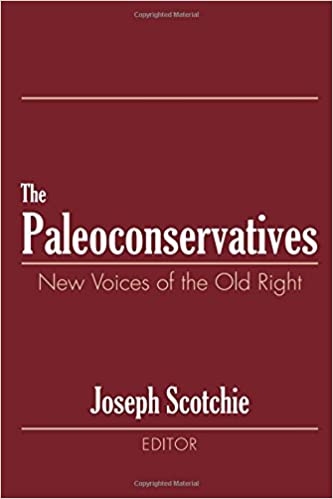 Similarly, I’ve also been watching on Fox News the steady procession of “proud, Republican” homosexuals, lesbians, bisexuals, and “moderate” feminists and wonder whether I’ve tuned in by mistake to a multicultural festival. Recently, I heard the “conservative” Geraldo Rivera explaining on Fox News how truly blessed we are by having so many Latinos streaming across our borders and assimilating “at a rate that’s faster than any ethnic group” in US history. [Tom Brokaw’s Hispanic remarks were ‘shockingly uninformed,’ Geraldo Rivera says, by Joseph A. Wulfsohn, January 30, 2019] My cup runneth over with such “conservative” verities.
Similarly, I’ve also been watching on Fox News the steady procession of “proud, Republican” homosexuals, lesbians, bisexuals, and “moderate” feminists and wonder whether I’ve tuned in by mistake to a multicultural festival. Recently, I heard the “conservative” Geraldo Rivera explaining on Fox News how truly blessed we are by having so many Latinos streaming across our borders and assimilating “at a rate that’s faster than any ethnic group” in US history. [Tom Brokaw’s Hispanic remarks were ‘shockingly uninformed,’ Geraldo Rivera says, by Joseph A. Wulfsohn, January 30, 2019] My cup runneth over with such “conservative” verities. Among Scotchie’s topics and personalities for discussion, another that especially interested me, given my preoccupation with modern European history, is the essay devoted to British statesman Enoch Powell. Scotchie approaches this British Tory opponent of immigration through Simon Heffer’s exhaustive biography, Like the Roman: The Life of Enoch Powell, which was published in 1999. Despite his lustrous careers as a classics professor, British officer during World War Two, and member of the Tory shadow cabinet in the late 1960s, Powell fell from grace after delivering what is misleadingly called the “Rivers of Blood” speech against unchecked immigration in 1968. The most offending line from that speech, about “the Tiber River foaming with much blood,” was drawn from Virgil’s Aeneid—a Latin epic that Powell had no doubt taught during his years as a classics professor in Sydney, Australia. Immediately after giving this oration, Powell was dropped by Tory leader Edward Heath from the shadow cabinet. Misnamed Conservatives then alternated with the Labourites in denouncing this moving target as a xenophobe.
Among Scotchie’s topics and personalities for discussion, another that especially interested me, given my preoccupation with modern European history, is the essay devoted to British statesman Enoch Powell. Scotchie approaches this British Tory opponent of immigration through Simon Heffer’s exhaustive biography, Like the Roman: The Life of Enoch Powell, which was published in 1999. Despite his lustrous careers as a classics professor, British officer during World War Two, and member of the Tory shadow cabinet in the late 1960s, Powell fell from grace after delivering what is misleadingly called the “Rivers of Blood” speech against unchecked immigration in 1968. The most offending line from that speech, about “the Tiber River foaming with much blood,” was drawn from Virgil’s Aeneid—a Latin epic that Powell had no doubt taught during his years as a classics professor in Sydney, Australia. Immediately after giving this oration, Powell was dropped by Tory leader Edward Heath from the shadow cabinet. Misnamed Conservatives then alternated with the Labourites in denouncing this moving target as a xenophobe.




 del.icio.us
del.icio.us
 Digg
Digg
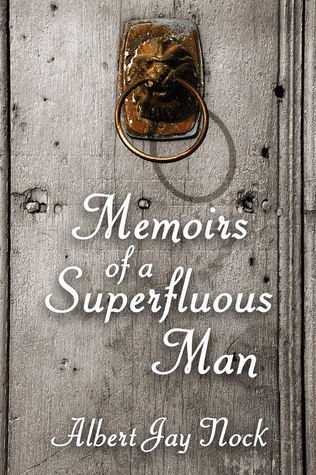 It may be Nock’s “
It may be Nock’s “
 René Girard a parlé de l’Amérique comme puissance mimétique. Sur cette planète de crétins en effet tout le monde veut devenir américain, y compris quand il s’agit de payer des études à quarante mille euros/an, des opérations à 200 000 euros, de devenir obèse et même abruti par la consommation de médias et d’opiacés...
René Girard a parlé de l’Amérique comme puissance mimétique. Sur cette planète de crétins en effet tout le monde veut devenir américain, y compris quand il s’agit de payer des études à quarante mille euros/an, des opérations à 200 000 euros, de devenir obèse et même abruti par la consommation de médias et d’opiacés...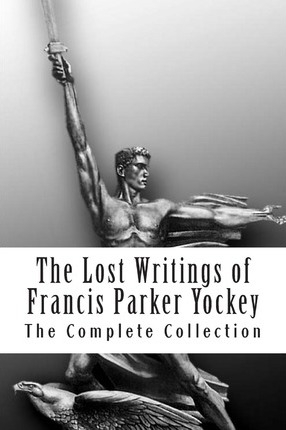 Le cinéaste Tim Burton a bien moqué ce comportement homogénéisé/industriel dans plusieurs de ses films, par exemple Edouard aux mains d’argent. Kazan avait fait de même dans l’Arrangement. Aujourd’hui ce comportement monolithique/industriel s’applique à l’humanitaire, à la déviance, à la marginalité, au transsexualisme, au tatouage, au piercing, etc.
Le cinéaste Tim Burton a bien moqué ce comportement homogénéisé/industriel dans plusieurs de ses films, par exemple Edouard aux mains d’argent. Kazan avait fait de même dans l’Arrangement. Aujourd’hui ce comportement monolithique/industriel s’applique à l’humanitaire, à la déviance, à la marginalité, au transsexualisme, au tatouage, au piercing, etc.  La musique est rarement entendue en Amérique, ayant été remplacée par le battement de tambour sans culture du noir. Comme le dit un musicologue américain: «Le rythme du jazz, tiré de tribus sauvages, est à la fois raffiné et élémentaire et correspond aux dispositions de notre âme moderne. Cela nous excite sans répit, comme le battement de tambour primitif du danseur de la prière. Mais il ne s'arrête pas là. Il doit en même temps tenir compte de l'excitabilité de la psyché moderne. Nous avons soif de stimuli rapides, excitants et en constante évolution. La musique est un excellent moyen d’excitation, syncopé, qui a fait ses preuves. »
La musique est rarement entendue en Amérique, ayant été remplacée par le battement de tambour sans culture du noir. Comme le dit un musicologue américain: «Le rythme du jazz, tiré de tribus sauvages, est à la fois raffiné et élémentaire et correspond aux dispositions de notre âme moderne. Cela nous excite sans répit, comme le battement de tambour primitif du danseur de la prière. Mais il ne s'arrête pas là. Il doit en même temps tenir compte de l'excitabilité de la psyché moderne. Nous avons soif de stimuli rapides, excitants et en constante évolution. La musique est un excellent moyen d’excitation, syncopé, qui a fait ses preuves. »
 Grégoire Canlorbe :
Grégoire Canlorbe : 
















Paul E. Gottfried
Paul Gottfried has spent the last thirty years writing books and generating hostility among authorized media-approved conservatives. His most recent work is his autobiography Encounters; and he is currently preparing a long study of Leo Strauss and his disciples. His works sell better in Rumanian, Spanish,Russian and German translations than they do in the original English, and particularly in the Beltway. Until his retirement two years hence, he will continue to be Raffensperger Professor of Humanities at Elizabethtown College in Elizabethtown, PA.